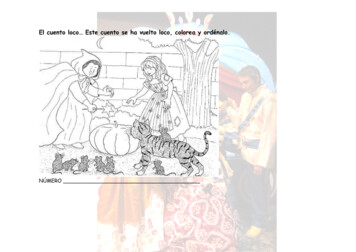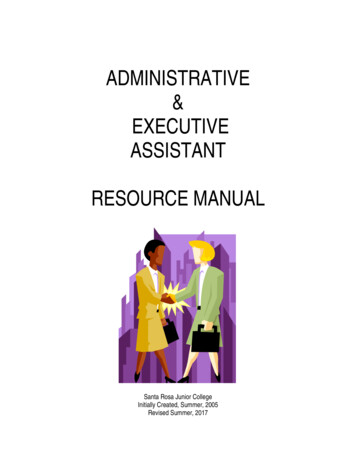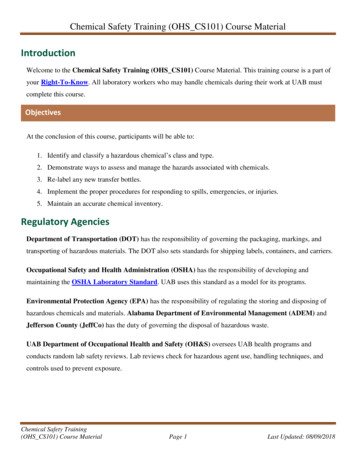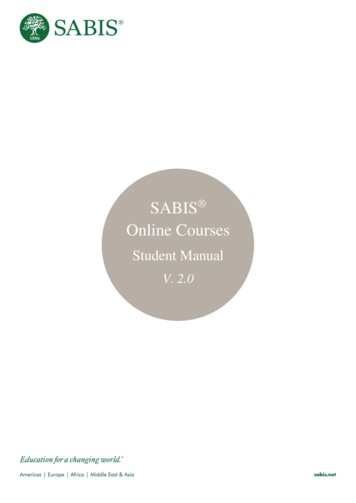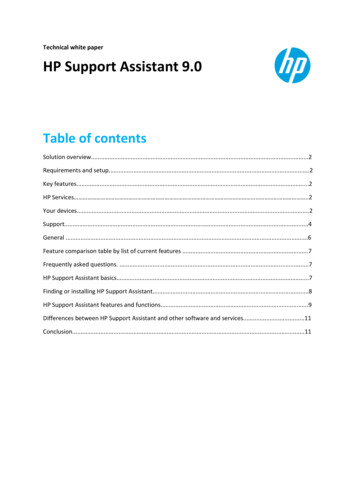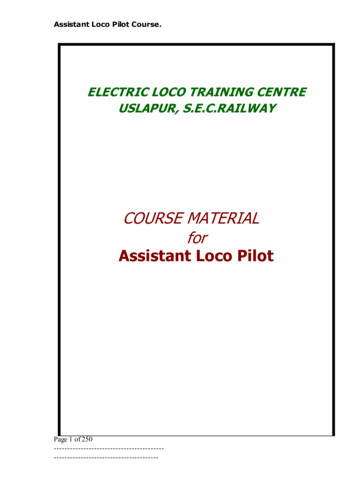
Transcription
Assistant Loco Pilot Course.ELECTRIC LOCO TRAINING CENTREUSLAPUR, S.E.C.RAILWAYCOURSE MATERIALforAssistant Loco PilotPage 1 of --------------------------------
Assistant Loco Pilot Course.RNG GRNGRNGRNGRNGRNGNO 2.1NO 2.2NO 2.3NO 2.4NO 2.5NO 2.6NO 2.7NO 2.8NO 2.9NO 2.10NO 2.11NO 2.12NO 2.13NO 2.14NO RICITYMETERSPROTECTIVE DEVICESBONDINGEARTH RETURN CIRCUITBATTERYMAGNETISMDC MOTORSDC GENERATORSALTERNATING CURRENT1 PHASE AC MOTOR3 PHASE AC MOTORTRANSFORMERSABBREVIATIONS AND GENERAL RIES&CHBA&GROUNDINGCONTACTORSRELAYSFEEDING POWER CIRCUITAUXIALIARY POWER CIRCUITAUXIALIARY CONTROL CIRCUITTRCTION POWER CIRCUITLINE CONTACTORS CONTROL CIRCUITQWC CONTROL CIRCUITMPS OPERATION WITH CIRCUITQ 50,C145,CTF’S,IP CONTROL CIRCUITQ 48 CONTROL CIRCUITDJ CONTROL CIRCUITSMGR CONTROL CIRCUITBOGIESENERGY CONSERVATIONSCHEDULES OF LOCOSTRACTION MOTORSPage 2 of 119121140148153153154
Assistant Loco Pilot 0NO6.1NO6.2NO6.3NO6.4NO6.5RNG NO6.6RNG NO6.7RNG NO7.1RNG NO7.2RNG NO7.3RNG NO7.4RNG NO7.5PNEUMATIC CIRCUITVACUUM BRAKE & TESTSDIFFERENCESAIR BRAKE SYSTEMINDEPENDENT LOCO BRAKESAIR BRAKE TESTSLOCO BRAKE TESTINGHEAD LIGHT NOT WORKINGWORKING WITHOUT PILOT LAMPSHORNS ARE NOT SOUNDINGDUTIES OF ASST.LOCO PILOT AT N/STESTING OF AUXIALIARIES WORKINGSTARTING &STOPPING ON UP GRADIENTPROCEDURE OF WORKING AIR BRAKETRAINACP PULLING & ACTIONSBRAKE BINDINGUSE OF FIRE EXTINGUISHERSAFETY RULES FOR 25KV AC TRACTIONUSING OF EMERGENCY TELEPHONEGROUNDINGINSTRUCTIONS FOR EARTHING OHESECURING DAMAGED PANTOGRAPHMAKING USE OF FLASHER LIGHTSAFETY EQUIPMENT IN THE LOCOLOCO EXAMINATION BEFORE LEAVINGSHEDQUICK EXAMINATION DURING SHORTSTOPPAGESTABLING OF LOCOLOG BOOK WRITINGWORKING LOCO FROM REAR CABAPPENDIXPage 3 of 4195205205206209210
Assistant Loco Pilot Course.Rng : 2.2ELECTRICITYElectricity is a form of energy produced by the flow of electronsin a closed circuit when a generator or battery maintains thepotential difference.It is not visible to us, but its effects are felt and realized.Voltage: The pressure produced by a generator is known as 'voltage'(or) the potential difference between two points is called 'voltage'.It is measured in volts by voltmeter and indicated by the letter 'V'.The voltmeter should be connected to the generator in parallel.Intensity: The flow of electrons in a circuit is known as "current".The rate of flow of current for second in a closed circuit is called"intensity". It is measured by ammeter, which is connected in seriesto the circuit. Intensity represented by the letter " I ".Resistance: The opposition offered by a material to the flow ofcurrent is called "Resistance". It varies from metal to metal accordingto the cross sectional area, length of the conductor and temperature.Resistance is measured in "Ohms" by Ohmmeter (or) Megger, whichshould be connected across the receiver. It is represented by aletter" R "Ohm's Law: Ohm's law states that in a closed electrical circuit,intensity is directly proportional to the voltage and inverselyproportional to the resistance provided the temperature remainsconstant.VVIR I X R ; I V/RVoltageIntensity.Resistance.; R V/IFactors Affecting Ohm's Law:If resistance decreases, current increases.If resistance increases current decreases.If length of the conductor increases, the resistance increases.If cross sectional area of the conductor increases, the resistancereduces.Page 4 of --------------------------------
Assistant Loco Pilot Course.Rng : 2.3SIMPLE ELECTRICAL CIRCUITSAn electrical circuit is a continuous path from source of energy(generator) to the receiver and back to the same source. It consistsgenerator, fuse, switch, voltmeter, ammeter, receiver and itsterminals etc.,Generator : It produces electrical energy.Fuse: It is a protective device to the circuit.Switch: It is a switch for opening and closing of the circuit.Voltmeter : Voltmeter indicates the amount of electrical pressureproducedby the generator.It should be connected across theterminals of the generator.Ammeter : Ammeter is used to measure the flow of current andgives the reading when the circuit is closed. It is connected to thecircuit in series.Receiver: It receives the current and produces the useful work.Conductor: It is a metallic path from the generator to receiverand back to the same sourceElectrical Circuits can be divided into four types.Open Circuits.Closed CircuitShort CircuitEarth (or) Leakage CircuitOpen Circuit: If anyone of the supply wires is disconnected or thefuse is melted, the current will not flow through the receiver. Thistype of circuit is called "Open Circuit".Page 5 of --------------------------------
Assistant Loco Pilot Course.Closed Circuit: The complete path for a flow of electrical currentthrough the receiver is called "closed Circuit".Short Circuit: An Electrical Circuit having two different levels knownas Positive and negative levels.The positive terminal of thegenerator to the positive terminal of the receiver is known as"Positive Level" and from negative terminal of the receiver to thenegative terminal of the generator is called "Negative Level". Anaccidental contact between the two different levels of a circuit iscalled "Short Circuit".Reasons For Short Circuit:a. Old or damage insulation.b. Loose and hanging wires.c. Contact due to leftover tools.d. Contact of outside wires.e. Contact of wires due to water leakage.f. Placing Uninsulated wires very closely without giving safety gap.g. Due to wrong connections.h. Constant rubbing of two cables (or) naked conductors touchingto the loco body.Bada.b.c.d.e.f.g.Effects of Short Circuits:The receivers are by passed.The intensity in the circuit increases suddenly.Sudden increasing of intensity produces abnormal heat in theCircuit.Due to high temperature the insulations are damaged.Due to high temperature electrical fire can be caused.The life of the generator and receiver are reduced.The increasing of intensity will cause further short circuits andresulting more damages of the equipments.Earth (or) Leakage Circuit:If any wire of the supply touches the body of an appliance, then it iscalled "Earth Circuit (or) Leakage Circuit."Preventive measures to be taken to avoid short circuits.Conductors are to be covered with insulating material such as rubber,cotton, silk according to the value of current passing in theconductor.Un insulated wires are to be kept with sufficient gap according to thevoltage value.Page 6 of --------------------------------
Assistant Loco Pilot Course.The terminals are to be provided with lugs and fix them firmly.High tension cables are to be insulated.Heating elements are properly to be secured at safest distance.Every circuit should be fixed with fixed value of intensity.To avoid wrong connections, each terminal of the wire is to benumbered.Fuses and miniature circuit breakers are to be provided in the lowtension circuits.High Voltage circuit breakers (or) minimum oil circuit breakers are tobe provided as protective devices against over current.0to250 Vto650 Vand250 V 650 V above-Low TensionMedium Tension (M.THigh Tension (H.T)Electrical Connection :Electrical Connections can be made in many ways and they aremainly classified as follows.Series Connection: In this circuit the receivers are connected oneafter another in the form of chain and in turn finally connected topositive and negative terminals of the generator.In this connectionThe voltages is divided according to the resistance value.Intensity remains constant in circuit.Total resistance is equal to - the sum of all receivers.A cut in the circuit causes "Total Failure" of circuit.Parallel Connection : In this circuit the receivers are connecteddirectly to the positive and negative terminals of the generator.In this connectionThe voltage remains constant in all receivers.The intensity is divided among the receivers, according to theirresistance value.The total resistance of the circuit is calculated by the formula.I/R I/R1 I/R2 I/R3 - - - - - A cut in the branch causes failure of that parallel branch only.Series - Parallelconnected in theknown as "Seriesbehavior of bothConnection: In this connection the receivers areform of series and also in parallel in one circuit is- Parallel" connection. This type of circuit will haveseries and parallel connections.Page 7 of --------------------------------
Assistant Loco Pilot Course.Difference between series and parallel connections:1.2.3.4.5.6.SERIESPARLLELReceivers are connected in1. Receivers are connectedthe form of chain one afterdirectly to the generator.another .2. In this connection theTotal Resistance of theformula is used to findcircuit is equal to the sumtotal resistance.of the all receivers.1/R 1/R1 1/R2 i.e R R1 R2 R3 - - 1/R3 Voltage is divided according3. Voltageremainsto the resistance value.constant in all receivers.Intensityisconstant4. Intensityisdividedthrough out the circuit.accordingtotheA cut in the circuit causesresistance value on eachtotal failure of the circuit.branch.Power varies according to5. A cut in the circuitthe number of receiverscauses failure of thatconnected in the circuit.parTICular branch only.6. The power of receiversremainssameasgenerator.Rng : 2.4METERSVarious circuit parameters are required to be measured theparameters such as voltage, current, resistance, power, energy etc.,need to be measured.The current transformers and potential transforms are speciallydesigned transformers which are used in the system wheresecondaries are connected to meters for measurement of current andvoltage, resistance respectively.Name of Meter Measuring Parameters in Units:AmmeterVoltmeterWatt meterOhm meterFrequency MeterMeggerEnergy meter-CurrentPotential DifferencePowerResistanceFrequency of SupplyInsulation testing- EnergyPage 8 of --------------------------------- Amperes- Volt- watts- Ohms- Hertz- Kwh
Assistant Loco Pilot Course.Rng : 2.5PROTECTIVE DEVICESIt is a device to protect the electrical circuits in the event ofany short circuit in the electrical circuits.Fuse: Fuse is a device connected in series to the circuit to protectthe circuit from damage in the event of over current.Limiting tension Battery: It is a device to protect the low tensioncircuit and the batteries in the event of any accidental contactbetween high tension, or medium tension with the low tensioncircuits.In this device two terminals are placed with a gap of 3mm, Oneterminal is connected to the positive level of the battery and theother terminal is grounded through loco body. When ever there is anaccidental contact between high tension or medium tension with lowtension circuits, intensity increases suddenly. At this time an arc willbe formed in the gap of limiting tension battery (LTBA) terminals inturn CCBA fuse melts which provided on the low tension circuit.The high tension circuit is also earthed and trips main circuitbreather (DJ). If the accidental contact remains permanent theterminals of LTBA get welded together and causes permanent shortcircuit in the low tension circuit. This condition leads repeatedmelting of fuse CCBA.Miniature Circuit Breaker (M C B ):This is also a safety device provided in electrical circuits for theprotection of the circuit equipments whenever current exceedsbeyond the rated value in a electrical circuit the miniature circuitbreaker will trip off, so that damages are avoided. The miniaturecircuit breaker has three positions.ONOFFTRIP (middle).In case of this circuit breaker trips off, keep in "ON" position.High Voltage Circuit Breakers:This type of circuit breakers are provided in A.C. Loco forbreaking the high voltage circuit by opening automatically when thereis over current or any abnormality in the circuit.There are two types of high voltage circuit breakers used in theA.C. Loco.1. Air Blast Circuit Breaker.2. Vacuum Circuit Breaker.Page 9 of --------------------------------
Assistant Loco Pilot Course.Page 10 of --------------------------------
Assistant Loco Pilot Course.Rng : 2.7BONDINGIntroduction: Bonding is an electrical contact between any part of theelectric circuit to the body of loco;Effects of bonding:A single bonding has no effect since the circuit is not completing.More than one bonding in same level also has no effects.More than one bonding at different levels have bad consequences.When there is one boding already in the positive side the man whocomes into contact with negative level may be electrocuted.When there is already one bonding in the positive (or) negativelevel and another bonding is created at different potential level isequivalent to a short circuit.Accidental Bonding: When an electrical wire of a circuit comes incontact with the loco body is called "Accidental Bonding".Intentional Bonding:Making the electrical wires to come into contact with the locobody intentionally is called "Intensional Bonding". The negativewires of the circuit are connected to the ground through loco body,wheels & rails. This arrangement is known as "Intensional Bonding".Page 11 of --------------------------------
Assistant Loco Pilot Course.To have a simple construction all wires of the negative levelbelonging deferent, circuit are connected to a common groundingpoint, this arrangement does not cause any disturbance to any circuitsince all are negative wires.Whenever there is a positive bonding (or) [accidental bondingon positive side] the circuit is closed through the loco body andthrough the intensional bonding") there by sudden increase of currentin the circuit, which in turn melts the fuse and save the circuit fromdamage. This arrangement also ensures the safety of the person.H O B A [Battery Earthing Switch] :The intensional bonding is arranged through a knife switch'HOBA' and a by passing resistance RBOBA210Ωis alsoproduced 'H' stands for switch "O" stands earth, 'BA' stands forBattery.This switch having 'ON' and 'OFF' position. Normally this switchshould be in ON position that means the negative wires of the LTcircuits are connected to the earth through this switch. Repeatedmelting of the fuses indicates that there is an accidental boding onthe positive level when such things occur Loco pilot has to operatethis switch HOBA from ON to OFF position. By doing this theresistance RHOBA of 210Ω will be added to the circuit there by overcurrent will be reduced and fuse may hold.GroundingEarth is taken to be a good conductor of electricity and for allpractical purpose. Its resistance is taken as zero and its potentialvalue is also zero.These characteristic of earth are of greatadvantage to us. Generally in all the industrial circuits the returnpath of the current is ensured through the earth. The negative levelof a generator (or) transformer and the negative level of the lastreceiver of the circuit are deeply buried in the earth, this is known as"Grounding".Advantages of Grounding:In case of short circuit on the positive side there will beincrease of intensity in the circuit which will cause melting of fuse(or) tripping of circuit breaker by that the circuit is saved from thedamage.In case of leakage at any point in the circuit there is no dangerof being electrocuted, since the leakage is drained to the earth.Since the return path of the current is arranged through earthfrom the receiver to the generator. Hence a lot of copper conductoris saved.This arrangement is adopted in A.C. Traction in which negative wireat the sub station is earthed and the receiver being loco its negativePage 12 of --------------------------------
Assistant Loco Pilot Course.wires are connected to the earth through loco body, frame, wheel andrail.Rng : 2.8EARTH RETURN CIRCUITEarth is a good conductor of electricity, its potential value isconsidered as zero. so negative level of the generator and negativelevel of the last receiver terminals are deeply buried in the earth, thecurrent passes through the conductor from the negative terminal ofthe last receiver the current passes through the earth, so that thecircuit is completed.The one terminal of A.C.transformer secondary in the substation is connected to the over head equipment (OHE) through thefeeding poles and the other terminal of the transformer is deeplyburied in the earth the current from the transformer is taken throughthe catenery and contact wires for the use of locomotive.When the pantograph of the locomotive is raised and the maincircuit breaker D J is closed the current from the OHE passes to themain transformer. After completion of its work in the loco, it passesthrough the loco body, axle, wheel, rail, rail bond, traction mast andthen to the earth. Hence the circuit is completed through the earthwith the substation.Page 13 of --------------------------------
Assistant Loco Pilot Course.Rng : 2.9BATTERYBattery is the source of electrical supply of electrical energywhere the chemical energy is converted into electrical energy due tochemical reaction. It is a combination of two or more cells connectedin series (or) in parallel in both series - parallel according to thenecessity the cells are two types namely primary cell and secondarycell.Primary Cell:It is a cell capable of producing 22 V max. as a single unit andthe electrical energy is stored in the form of chemical energy. In thistype of cell once the electrical energy is used, the chemicals willloose their properties and cannot be used further. The primary cell iscapable of converting chemical energy into electrical energy and it isnot capable of converting electrical energy into chemical energythrough charging. That means once this type of cell is discharged, it'slife will be over. This type of cells are normally used in laboratories.Secondary Cell:The secondary cell also works as same principle of primary celland produces maximum voltage of 22V. The main difference ischemical reaction which is in two ways in the secondary cell. Firstthe electrical energy is converted into chemical energy while chargingand the electrical energy is stored in the form of chemical energy.While discharging the chemical energy is converted into electricalenergy. The life is more and it is about 4 to 5 years. In order tomaintain the cell in good condition the cell should be in the processPage 14 of --------------------------------
Assistant Loco Pilot Course.of charging and discharging. Due to this process distilled water inthe electrolyte evaporates from the cells hence the cells requirefilling up with distilled water.In our A C Loco lead acid cell batteries are used. The followingare the main parts of the secondary cell.Container: It is vessel made up of hard rubber in which theelectrolyte is filled and electrodes are placed.Electrode: This electrodes are made up with two different type ofmaterials they are.Anode or positive rod is made up with lead oxide (PbO2).Cathode or negative rod is made up with pure lead (PB).These two rods are placed in the container without touching eachother and their contact is made through electrolyte.Electrolyte: It is a combination of distilled water and sulphuric acid(H2SO4) in the ratio of 8 : 1 (aprox). It is called dilute H2SO4. It isfilled in the container up to the active plate level and the electrodesare placed in the electrolyte when the cell is fully charged thedensity of liquid will be 1.25.Terminals: These are the top ends of the anode and the cathode towhich the circuit wires are connected. Anode end is positive and thecathode end is negative.Connective Wire: This is the conductor connected to the positive andnegative terminals of the cell through the receiver to complete thecircuit.When the two electrodes i.e., anode and cathode areimmersed in dilute H2SO4 (electrolyte) the oxide and lead present inthe anode, hydrogen and sulphur present in the electrolyte willundergo chemical reaction. Due to this electrons present in theanode are displaced. When a wire is connected between the twoterminals of anode and cathode to a receiver, the current startsflowing in the circuit. The potential difference is maintained betweenanode and cathode due to chemical action. The current flows fromanode to cathode outside the cell and flows from cathode to anodeinside the cells.The maximum voltage that a cell can produce is 2.2 v. The cellshould not be used if it’s voltage is dropped below 1.8 v, because ifthe voltage drops below 1.8 v the cell cannot be recharged.Charging is the process adopted to recap the chemicalproperties of the cell which are lost due to discharging. The positiveterminal is connected to the positive level of the generator and thenegative terminal of the battery is connected to the negativeterminal of the generator.Page 15 of --------------------------------
Assistant Loco Pilot Course.Usage of Battery on A.C. Loco/EMU/MEMU: There are 10 batteries inthe loco. In each battery 5 cells are connected in series. Batteryboxes are provided on both sides of the loco frame. 5 batteries eachside between two trucks in two container boxes. Total voltage of thebatteries is 110 V and having amperage of 60 to 70. The batteryvoltage is used on the loco for the following purposes.For working of baby compressor (MCPA) to build up pneumaticpressure.For raising of pantograph.For closing of DJ (de jointer).For maintaining all control circuits when battery charger fails.The Loco pilot should check the battery voltagebeforeenergising the loco while taking over charge.For this purposevoltmeter (UBA) is provided which will indicate battery tension whenthe switch ZUBA and HBA are kept in one position. The UBA shouldindicate more than 85 V and the Loco pilot should also check thecharging rate of the batteries by the battery charger when the loco isenergised. For this purpose an ammeter is provided on the batterycharger which should normally indicate 2 to 3 amps and in no case itshould indicate more than 7 amps.We have to observe smoke or smell from the battery leakage ofelectrolyte any crack of the container and also condition of thebattery boxes. All these things should be checked by the Loco pilotand the Asst.Loco pilot at the regular intervals.Checking methods of the battery:There should not be any leakage of electrolyte from the battery.The connecting wires of the batteries should not be slack andto be secured properly.Battery boxes, covers should be secured properly.Battery charging rate and battery voltage should be noted atevery neutral section or at certain intervals.Ensure the terminals of the battery i.e they should be free fromany foreign body in order to avoid short circuit.Page 16 of --------------------------------
Assistant Loco Pilot Course.Rng : 2.10MAGNETISMThe specific quality of the material which attracts the ferrousmaterials like iron, nickel, cobalt etc., is called "magnetism". Thematerial which posses this quality is called "magnet".The ordinary iron rod is not capable of attracting any ironfillings. By some process or other if the small molecules are arrangedin a systematic manner, the same iron rod becomes a magnet.The magnet will have the following properties.The magnet attracts the iron filling of magnetic materials towards it.Any magnet will have two poles.A) North PoleB) South Pole.Two like poles will repel and unlike poles will attract.Every magnet will have its own magnetic field or Flux.Lines of forces will start from north and join in south pole.Within the magnetic field it will attract the magnetic materials.If the magnet is suspended freely its north pole will always pointtowards north side of the earth and its south pole will be pointedtowards south side of the earth.If the magnet is hammered or heated, it loses its own properties.When the magnet is broken into pieces each individual piece acts asa magnet.Magnets are two types.Natural magnets.Artificial magnets.Natural Magnets: Some specific type of stones which are found onearth have the property of attracting magnetic materials by theirnature, hence they are called "Natural Magnets".Ex: Bar Magnet,Horse Shoe Magnet.Artificial Magnets: The magnets are prepared by some process orfabricated through some process are known as " Artificial Magnets".These are two types.1. Permanent Magnet2. Temporary Magnet.Difference between permanent and temporary magnets.Permanent Temporary: It is fabricated by influence of other magnet.The power of magnet fixed.The polarity is fixed.Page 17 of --------------------------------
Assistant Loco Pilot Course.Magnetic properties effected by heat.This power is permanent.The permanent magnet looses its quality due to old age.It is prepared by passing current through an insulated wire.The power can be increase (or) decreased.Polarity can be changed.Properties not effected by heat.We can convert in to a magnet (or) ordinary iron piece.Magnetic Induction: If an ordinary iron piece is kept within the fieldof magnet, we observe that the iron piece attract the iron filling butas soon as the iron piece is moved away beyond the field this ironpiece will not have the quality of magnetism. The ordinary iron piecebecomes a magnet by keeping in the field of another magnet is dueto magnetic induction. The iron piece posses the quality of magnet iscalled "Induced magnets"Electro Magnet: It is an artificial temporary magnet which is madewith the help of electricity, if an insulated wire wounded round a softiron core and the terminal are connected to the battery (or) througha generator. We can observe that on closing of the switch the softiron piece becomes a magnet due to the current passing through thecoil around. When the switch opened, the core will become anordinary iron piece.Residual Magnetism: when an iron core is magnetized by allowingthe current to flow in the coil, normally the iron core should becomean ordinary iron piece, when the flow of current is stopped. But inpractice the iron core retains some magnetism even after the flow ofcurrent is stopped. This quality is called "Residual Magnetism" andthe iron piece which retains this magnetism is called "ResidualMagnet".It will be low in power and that power varies frommaterial to material according to their quality. In our A C Loco weare using special type of soft iron which will be obtaining residualmagnetism.Protection During Coasting: When the loco is on coasting with MP(Master Controller) on zero there is no supply of the current to thetraction motors, either to the armature or to the field. Since thearmature is connected to the axle through a pinion and gear, thearmature continue to rotate, the inductor which worked as electromagnets are having some Residual magnetism. Since the aboveconditions are fulfilled the motor starts producing current, and thecurrent passes through the cables and to the high tensionPage 18 of --------------------------------
Assistant Loco Pilot Course.compartment.So it is dangerous to enter into high tensioncompartment even when the loco is in coasting.Rng : 2.11D. C. MOTORSThe D.C. Motor is a machine which converts electrical energyinto mechanical energy fed by D.C. This motor will works on theprinciple of attraction and repulsion.When the inductors andarmature are energised the magnetic line of forces are createdbetween armature and inductors. Due mutual action of poles thearmature starts rotating since the polarities of the armature ischanging at regular intervals through the commutator, whenever thearmature comes in front of the conductors there by the armaturerotates continuously.The rotation of armature is transmittedthrough the shaft to the machine which is attached to it.Advantages of D. C. Series Motors:It’s starting torque is more,Reversal of direction of armature rotation is easy.Variable voltage can be applied and also variable speeds arepossible.Due to thse reasons this type of motor is used in our AC locomotivesReversing The Direction Of The Motor:The reverse direction of motor is achieved by changing thedirection of flow of current either in inductors or in the armature.In our A.C. Loco the direction of flow of current is changed inthe inductors through the "Reversor". For this purpose in our loco theReversors will be operated with remote control operations throughM.P.J. It is having three positions. They are O, F and R.For reversing the direction of motor first loco should bestopped. Then only M.P.J should be operated for required direction.Page 19 of --------------------------------
Assistant Loco Pilot Course.If sudden changing of rotation o
ELECTRIC LOCO TRAINING CENTRE USLAPUR, S.E.C.RAILWAY COURSE MATERIAL for Assistant Loco Pilot. Assistant Loco Pilot Course. Page 2 of 250----- -----RNG NO TOPIC PAGE RNG NO 2.1 SYMBLOS 1 RNG NO 2.2 ELECTRICITY 5 RNG NO 2.3 METERS 10 R
